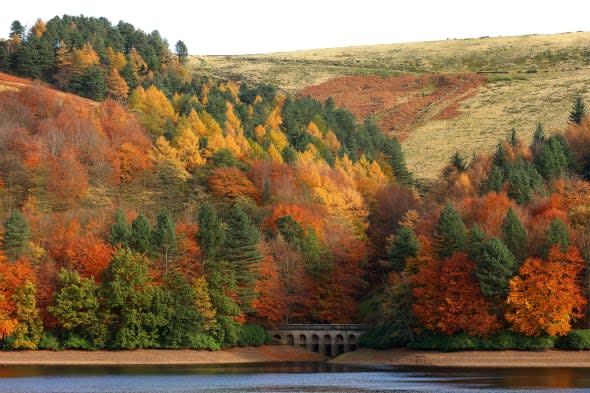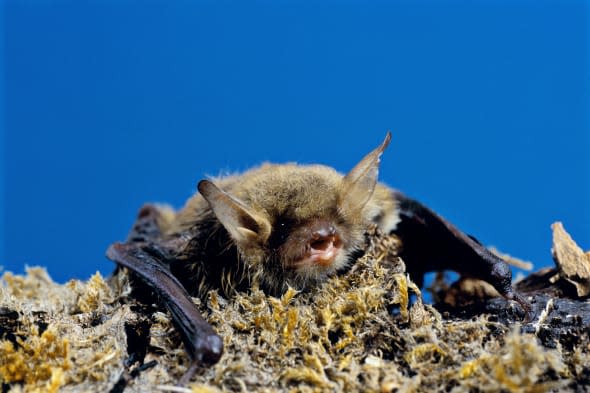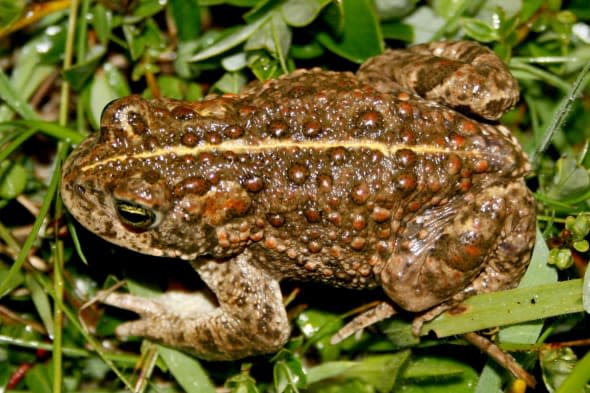Signs of autumn appear in UK - and it's only 1st July

Signs of autumn are already beginning to show across the country - and it's only the first of July.
According to conservationists, the year is racing towards autumn ahead of schedule following an early spring and summer.
As the year reached the half-way mark, the National Trust said wildlife seemed to have come through the wettest and stormiest winter on record and nature had hurtled "helter-skelter" through the seasons since.
Now signs of autumn are already in the hedgerows and woods, National Trust naturalist Matthew Oates said.
"Looking at this year, where does it want to be? It raged its way through winter, then we went into an incredibly early spring, and then it rushed helter-skelter through spring without stopping for breath," he said.
A hundred years ago on midsummer, Edward Thomas had the inspiration for his famous poem, Adlestrop, hearing a blackbird singing while his train stopped at the Gloucestershire village.
But Mr Oates said that this year, blackbirds had already stopped singing for the season by midsummer.
"We're ahead still, remarkably ahead, birds have largely stopped singing, a lot of butterflies are very early and are still coming out early," he said, pointing to early arrivals of high summer butterflies including chalk hill blues and purple emperors.
And he said: "There are really strong signs of autumn already here, like the beech nuts, it's an amazing beech mast year and the nuts are incredibly well developed."
He also said sycamore seeds were well developed and hawthorn berries - and even holly berries - were already red.
The early spring and summer seemed to have benefited more species than had been hit, he said.
"If we go back to that winter, it was the wettest, stormiest, wildest winter, and very stressful for every living thing, including us, but wildlife seems to have come through it incredibly well.
"There are always winners and losers. At the moment there seem to be far more winners than losers, though we must remember a lot of our wildlife is in a pretty beleaguered state."
Despite the generally good situation, Mr Oates raised concerns about low numbers of butterflies such as cabbage whites and the scarcity of bees and many flying insects.
More positively, some species of insect may be able to fit in an extra brood because they are so far ahead for the year, he said.
And an early autumn would not spell problems for wildlife, he said, so long as creatures such as squirrels and dormice had had the chance to fatten up before winter set in.
Even if the weather now changed to conditions similar to the record wet summer of 2012, species had already done well in the early spring and summer, he added, with birds and amphibians such as natterjack toads faring better than after the freezing winter and spring at the beginning of 2013.
And if hot dry conditions set in for the summer, the water table was high after the wettest winter on record, and the chances of damage to wildlife due to drought were "very low", he said.
Here are some of the highs and lows of the "remarkable" weather the UK's wildlife has had to cope with so far this year:
The winter storms hit seabirds such as puffins, damaged sand dune habitats and brought down hundreds of trees, with the Trust's Killerton Estate in Devon alone losing more than 500 trees.

But the mild weather meant spring got going fast and early, with hazel catkins out and red squirrels at Formby, near Liverpool, starting their courtship in January.

When the rain stopped, spring got going in earnest, with sallows (pussy willows) and bluebells flowering early.
It was a generally good spring, apart from two poor spells at the end of April and at the end of May which knocked out a number of spring insects.

Bats at Bodiam Castle in East Sussex produced their earliest brood on record, born on May 16, compared to an earliest previous recorded birth of May 23, in 2011.

It was an early and successful breeding season for amphibians, with plenty of warm water, which meat that natterjack toads at Formy spawning well.
A warm, wet spring encouraged grass and other vegetation to grow significantly.

Lots of bottlenose dolphins and leatherback turtles were seen along the Ceredigion coast, the National Trust said.
Related stories
21 beautiful British walks for autumn
Is this the hottest June ever?
Heatwave! Britain set for warmest day of the year as temperatures hit 27C
Quirky things to do in England this summer






